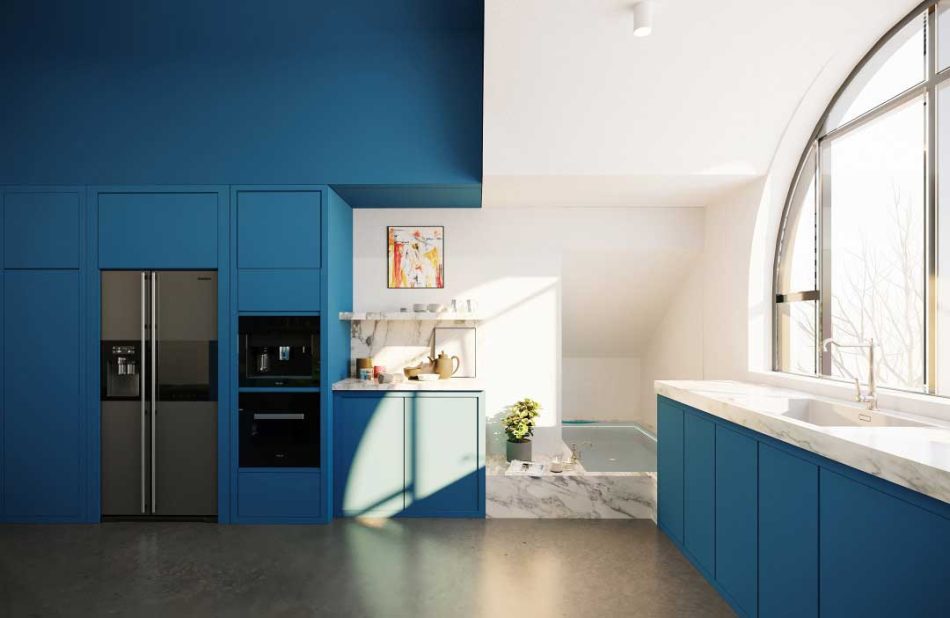6 trends you should follow with your architectural visualization services

Every commercial or residential project needs to be appropriately visualized so everyone involved can understand all the essential aspects. Architectural rendering plays a vital role in this process as it allows clients to understand and criticize a design with complete oversight of all the elements.
The architectural visualization sector is evolving fast, even though it hasn’t been around for that long. New technologies, approaches, and trends are constantly emerging. 3D artists need to stay updated with these things to remain competitive in the job market and produce high-quality imagery.
Today we’ll share some of the latest trends in this profession you should keep up with. Understanding the industry trends is essential because you will likely work with clients who want to see those things in their final projects.
- Include VR with your rendering services
We mentioned technology is one of the key driving factors in this field. We live in the golden age of digital technology, and this is where 3D rendering fits in. You probably heard about virtual reality for movies, video games, and many other mediums.
Design firms can also use VR as an advanced tool for viewing projects. Virtual reality is quite immersive, the number one reason it’s one of the most prominent trends in the visualization world. This technique allows people to visualize designs, floor plans, and whole buildings in a realistic environment.
Virtual reality is interactive and dynamic, meaning potential clients can move through a property and look at things from different elements while adding, removing, or moving objects. Not only is this very impressive and leaves a great first impression on clients, but it also makes it much easier for them to make important decisions.
- Add animations
Animations have been around for a long time. They’ve always been that “special” layer of 3D making content more realistic, immersive, and convincing. Of course, animations have often been used to represent unrealistic things, but in 3D visualization, it’s generally used to make things look even more realistic.
Much like 3D visualization, animation is also evolving quickly. Using animations in architectural renders helps people understand how a project will grow and develop and gives a dynamic element to the whole experience.
Some of the most common animations in 3D visualizations include 3D walkthroughs and axonometric drawings, but architects demand all kinds of things. Animations give additional information about the whole project and clarify specific problems, misunderstandings, and solutions.
- Green initiatives are strong
The whole architecture and construction industries are turning to green initiatives. There’s been an increase in global awareness regarding climate issues and their effects on our planet. That reflects on companies, their employees, and clients.
In other words, it’s only natural that companies want to make their projects more sustainable. Many projects are designed with added greenery, use recycled materials, and have solutions that conserve energy. For example, many new apartment projects have greenery rooftops and rainwater harvesting systems.
Still, you can’t force green initiatives where they can’t work. Implementing these solutions properly requires studying the whole project and considering plausibility, visibility, and financial aspects.
- Video walkthroughs
Clients often want 3D architectural walkthroughs to make a strong impression on potential stakeholders during presentations. Walkthroughs can make project visions turn alive whether we’re talking about residential or commercial buildings.
3D artists produce brilliant representations of designs and floor plans that deliver photorealistic videos making stakeholders think that they’re actually at the property. Video walkthroughs help viewers experience exterior and interior details with all the space elements and natural effects included in the visualization.
All that combined helps convey realism and authenticity. 3D artists offer video walkthroughs in multiple formats, including MOVIE, MPEG, and AVI files. Consider working with animators before you can actually execute the whole presentation yourself. After all, making animations is not easy, and it takes time to learn how to do this properly.
- Use static diagramming
Architectural visualization is all about presenting the project how it would look when finished and allowing clients to understand everything about it. But the whole field has moved a step further as it’s no longer only about what the clients can visualize.
Architects want clients to understand the project beyond the obvious visuals in front of them. For example, architects and construction engineers have a much easier job when they can explain to their customers how the whole design process or construction process will work.
At the same time, you must explain all these things as simply as possible. That’s where Static Diagramming shines, allowing you to present all the elements used for designing a project. For example, you can include property characteristics, mechanical systems, environment,
- Add side-cut images
Perspective and camera angles give you a lot of creative ways to present something. They can help you direct the viewer’s attention, present different information, tell a story, etc. Side-cut perspectives or images give you a side view looking inside of an object.
It’s similar to doll houses where you have all the doors, walls, and windows on one side, but the other side is “open” to let you get inside and see all the rooms, decorations, and other interior designs.
It’s one of the latest trends, and it’s used particularly for properties with multiple stories, including buildings, row apartments, townhomes, etc. You can stack all the space configurations vertically, including garages, living rooms, bedrooms, and garages, giving viewers all the information to understand a complex property.
Conclusion
Architectural rendering is a growing field offering a lot of opportunities. More and more industries and individuals are using 3D rendering for various applications. In other words, if you’re looking to start a career as a 3D visualizer, this is the right time to do it.
However, you should know that you must keep up with the latest trends and constantly improve if you want steady employment.





